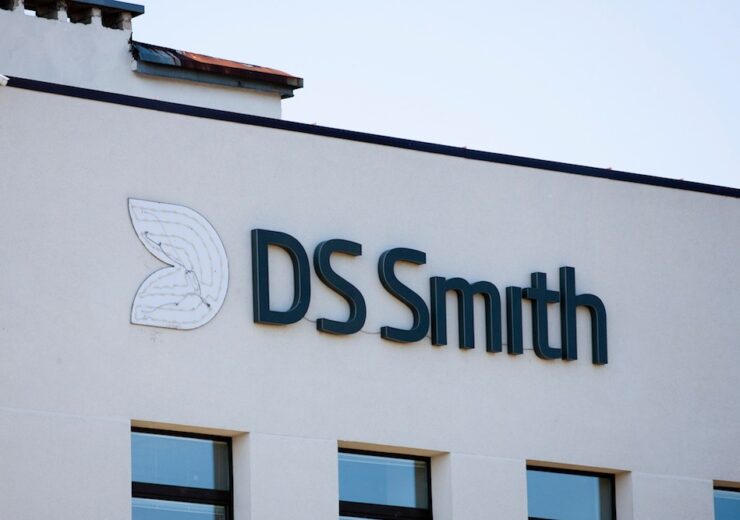The '14-day box-to-box story' developed by DS Smith sees it operate a system whereby the company collects, recycles, and converts all of its products in 14 days

DS Smith is focused on closing the loop by designing its products to be reused and recycled, and by 2023 aims to manufacture packaging that is 100% recyclable or reusable (Credit: Shutterstock/Karolis Kavolelis)
Over the past ten years, cardboard box packaging giant DS Smith has been looking at ways to optimise its sustainability credentials through the circular economy.
The firm is focused on closing the loop by designing its products to be reused and recycled, and by 2023 it aims to make 100% of its packaging recyclable or reusable.
It aims to do this by training 100% of its designers in circular design principles and make recyclability mandatory in new product development.
In addition to this, it will monitor and recognise progress through an internal certification scheme.
A lot of this work is optimised in its “Box to Box in 14 Days” principle.
Speaking at a webinar hosted by the company, Teresa Del Re, DS Smith’s packaging division’s marketing director, said: “Our 14-day box-to-box story is incredibly powerful.
“That’s because, within 14 days, a box is sent to our customers, ends up on a shelf, gets picked up by our recycling division from the supermarkets, goes into our paper mills and ends up again as corrugated packaging in our packaging factory.
“And that 14-day credential is really important, and sets us apart from many of our competitors.”
NS Packaging explores how the process came about, and how it works.
What is DS Smith’s 14-day box-to-box process?
In August 2017, DS Smith released a film titled Box to Box in 14 Days, which explored a closed-loop for cardboard recycling.
The two-week journey follows a cardboard box as it’s made, used, collected, recycled and manufactured through the firm’s packaging, recycling and papermaking operations.
Speaking at the time, DS Smith’s then marketing director of its paper and recycling divisions Tim Price said: “The film of ‘Box to Box in 14 Days’ allows us to demonstrate the DS Smith Supply Cycle, from the point that packaging is designed, through to its use in getting customer products visible and accessible on retailer shelves.
“Following a box on this journey, the film looks at how fibre is collected, recycled and manufactured into new packaging products.”
DS Smith Europe’s marketing director Vanessa van Dongen added: “DS Smith is a leading supplier of sustainable packaging solutions, so we are delighted to be able to show how our packaging is designed, produced, brings value to our customers, and recycled into more boxes.
“Throughout our Supply Cycle, from design through to recycling, we provide sustainable solutions for our business, our customers and our environment.”
The film demonstrates the firm’s closed-loop model and was filmed at a number of locations including a recycling facility, paper mill, packaging plant and design studio owned by the company, as well as both its retailer and FMCG customer sites.
By recycling the paper fibres in its cardboard, DS Smith says it can save more than 360,000 trees every year from being cut down.
How does the process work?
The firm’s 14-day box-to-box process begins when it sends its pre-packed boxes to its customers’ factories, where they’re popped into shape and their products are placed inside, with this taking around one to two days.
The following couple of days of the process takes place in a retail store – where the company’s “shelf-ready packaging designs” are made to stand out in the store, as nearly three-quarters of purchasing decisions are made in the shop.
In addition, DS Smith works with its retail customers to ensure the packaging it collects from their stores are kept separate from all other materials during the process – keeping it clean and free from contamination.
Days five and six sees the post-consumer cardboard products in the hands of the firm’s recycling division, with the loose fibre sent to its depot to be quality checked, compacted and baled.
Its baling press makes 30 bales per hour, each weighing 500kg – collecting more than five million tonnes of this material every year.
During days seven to ten, these bales are in the hands of the company’s paper division, being sent to its paper mills – the biggest of which can receive up to 3,000 tonnes of cardboard a day.
The paper fibres that contain 99% water are pushed through 400-metre long steam-heated drying cylinders in the paper machine.
When these are dry, the paper is wound onto a jumbo reel, which can be more than seven metres long and weigh up to 60 tonnes.
The final days of the process – 11 to 14 – sees the paper in the hands of DS Smith’s packaging plants, with paper made into a corrugated cardboard machine that is approximately the length of a football pitch.
These new cardboard sheets are then stamped with cuts and fold lines and printed with the branding product information.
